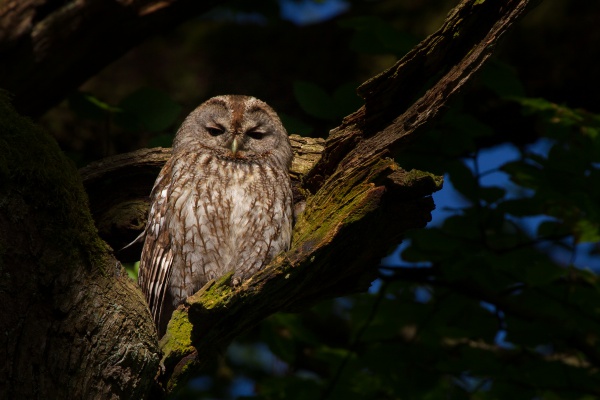Facts About Tawny owl
The tawny owl, also known as the brown owl, is a medium-sized, nocturnal bird of prey commonly found in woodlands throughout much of the Palearctic region. Part of the Strix genus, which gives its name to the owl family Strigidae, the tawny owl is easily identifiable by its robust body, large rounded head, and distinctive facial disc. Its underparts are pale with dark streaks, while the upperparts can be rufous, brown, or gray. There are eight recognized subspecies with varying color patterns, each genetically adapted to different climates.
These owls primarily hunt small mammals like rodents but also feed on birds, invertebrates, amphibians, and occasionally fish. They typically hunt by dropping from a perch or flying low over the ground. Interestingly, their vision is quite similar to that of humans; however, their asymmetrical ears provide exceptional directional hearing, crucial for nocturnal hunting.
Tawny owls are non-migratory and highly territorial. They typically nest in tree hollows, which offer a safe space for their eggs and young. In terms of size, females are larger and heavier than males, showcasing notable sexual dimorphism. These owls have a variety of vocalizations for different purposes, such as advertising, defending their territory, and communicating with their mates. Their eerie calls have often been incorporated into folklore, frequently associated with bad luck and death.
Adaptable to a variety of habitats, tawny owls can thrive in deciduous and mixed forests, parks, and urban areas with mature trees. They are widespread throughout Europe, parts of Asia, and the Middle East. The size of their territories depends on the quality of the habitat and the availability of prey.
Breeding occurs once a year, with females laying 3-5 eggs in tree cavities or nest boxes. The female incubates the eggs and cares for the chicks, while the male is responsible for providing food. The young owls fledge at about one month old but remain dependent on their parents for several more weeks.
Tawny owls face threats from larger raptors like eagle-owls and goshawks, as well as from human activities such as vehicle collisions and habitat fragmentation. Despite these challenges, the tawny owl remains a common and widespread species. With an estimated European population of 970,000–2,000,000 individuals, their numbers are stable, leading to their classification as a species of least concern by the IUCN.

 Ireland
Ireland